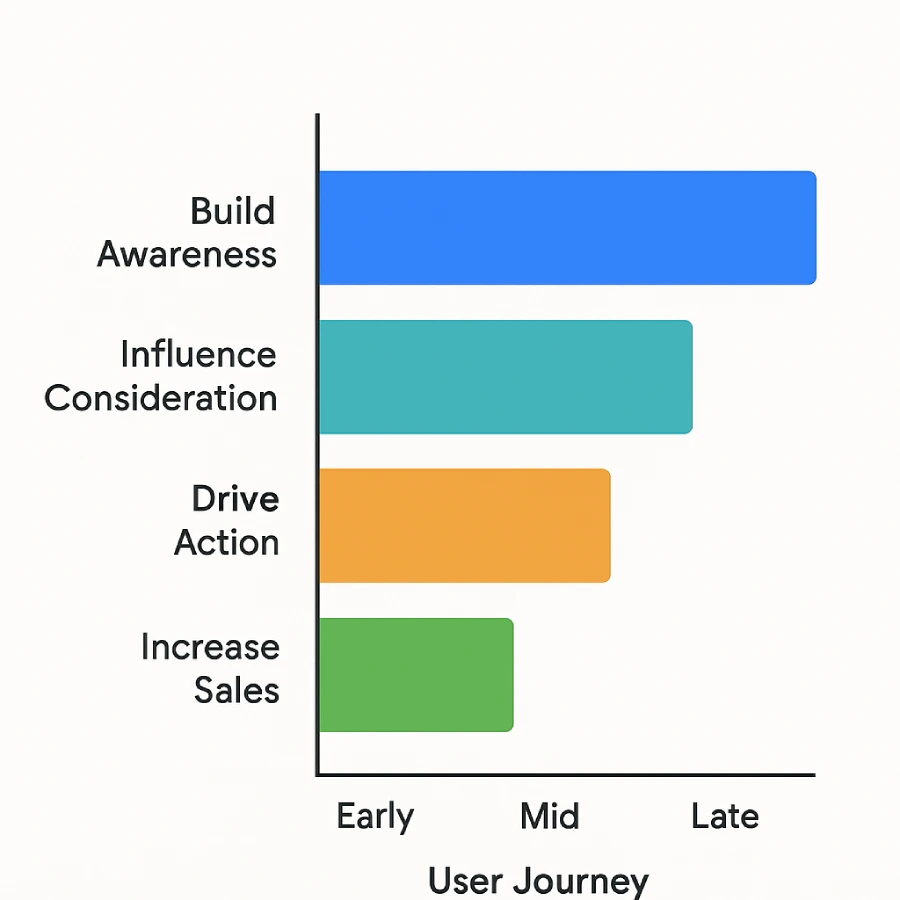When I first started learning Google Ads, I assumed targeting was just about picking ages and interests. But this question opened my eyes to how smart Google’s audience system really is, especially when it comes to catching people who are actually shopping.
It’s not just about who people are, it’s about what they’re doing right now. And that’s where In-Market audiences come in. Now let’s start,
Question
Robert manages a website that sells sporting goods. He wants his products to be featured in various online sporting publications while potential customers are researching and comparing different football brands online. Which option will help Robert influence customer consideration?
- Demographic retargeting
- In-Market audiences
- Custom Affinity audiences
- Affinity Audiences
Here is the correct answer:
In-Market Audiences ✅
Why are in-market audiences correct?
What are In-Market Audiences?
These are users who are actively browsing, comparing, and considering purchases in a specific product category, like football gear, sporting equipment, or athletic shoes.
Google tracks:
- The pages they visit
- Their search queries
- Their online behavior
So if someone is searching:
- “Best football cleats 2025”
- “Compare Nike vs Adidas football shoes”
- “Top football brands for youth”
…Google knows this person is in the market — and Robert’s ads can show up on related sites (like sporting blogs, YouTube gear reviews, etc.).
🧠 Think of it like this:
You’re standing right next to the shelf at the store while someone is holding two brands and deciding — and that’s when Robert says,
“Hey, check out our store too!”
Real-Time Data Insight:
- Google Ads data (2023) showed In-Market audiences convert 20–30% better than broad affinity targeting.
- Businesses using in-market segments saw 2.3x more engagement compared to standard interest-based audiences.
Why the other options are incorrect:
🚫 Demographic Retargeting
- This only narrows audiences by age, gender, household income, etc.
- It doesn’t consider behavior or intent.
- You might hit the right age group, but not when they’re ready to buy.
Example: Showing ads to males 18–24 isn’t useful unless they’re already shopping for football gear.
🚫 Custom Affinity Audiences
- These are more interest-based and broader than in-market.
- You build them by targeting people who like certain things, such as:
- “Football fans”
- “People who read ESPN or Sports Illustrated”
- But liking football ≠ shopping for cleats.
⚠️ Too top-of-funnel for Robert’s goal of catching users mid-decision.
🚫 Affinity Audiences
- This is even broader than custom affinity.
- Targets long-term interests like:
- “Sports Enthusiasts”
- “Outdoor Lovers”
These people may love football but might not be in a buying mood.

Visual Chart: Audience Types Comparison
| Audience Type | Targeting Type | Intent Level | Use Case | Good for Robert? |
|---|---|---|---|---|
| In-Market Audiences | Behavioral (shopping) | 🔥 High | Users actively comparing/buying football gear | ✅ YES |
| Demographic Retargeting | Basic audience filtering | 🧊 Low | Filters by age, income, etc. | ❌ No |
| Custom Affinity Audiences | Interest + keyword | 🟡 Medium | Users who follow sports, brands, blogs | ❌ Not specific enough |
| Affinity Audiences | Broad interest | 🧊 Low | General football or sports fans | ❌ Too broad |
Real-Life Example:
Let’s say Robert owns GoalZoneGear.com, an online football gear store.
💡 Someone is on a blog comparing the top 5 football cleats for 2025.
They’ve already searched for “best football shoes for wide feet.”
Google recognizes this person as “in-market” for football gear.
So while the user scrolls, they see this banner:
“🔥 Compare Top Football Cleats – Free Shipping from GoalZoneGear.com”
Boom. Robert just showed up at the perfect time.
Helpful Resources:
Conclusion:
If your customer is in research mode, comparing brands, and ready to buy, like Robert’s shoppers, you don’t want to waste time with broad audiences.
👉 You want In-Market Audiences to appear right when they’re ready to choose.
It’s not just about showing up — it’s about showing up at the right moment.
FAQs
Q1: Can Robert also use remarketing?
Yes! Once someone visits his site or clicks his ad, he can retarget them later using Drive Action campaigns.
Q2: Should he use custom affinity too?
Maybe — for brand awareness, but not for influencing decisions. In-market is better for that middle stage.
Q3: Are in-market audiences more expensive?
They can be, because they’re more competitive — but also more efficient, meaning you’ll likely see better ROI per click.
Now, if you are ready, you can take the Google Skillshop test for the Google Ads Display Exam. Want more real exam questions with easy answers like this? Follow along — I’ll be breaking down more Google Ads Display Measurement Certification Free examples in the next posts.

